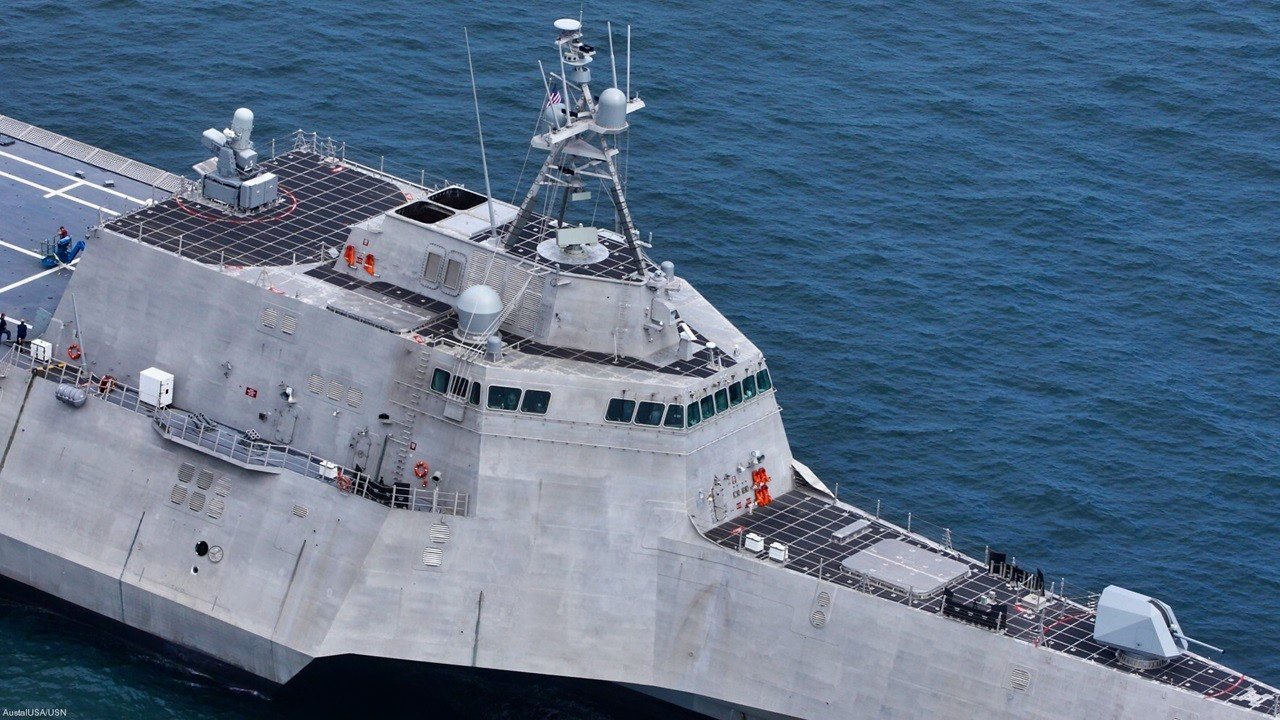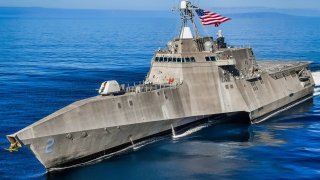Littoral Combat Ship: How Did This Navy Warship Fail?
The Littoral Combat Ships have been referred to as complete failures by some industry experts. Some of these vessels are now being retired.
Littoral Combat Ship - Why Did it Fail? - Last month, a U.S. Navy ship was stranded in Lake Erie at the Port of Cleveland following a worker’s strike.
The service’s latest Littoral Combat Ship (LCS), the USS Marinette, was trying to make its way to the Atlantic Ocean when it became stuck on the port.
This occurrence was actually not the first time one of the Navy’s LCSs got stuck in the Great Lakes.
After the USS Little Rock was commissioned, it also became stuck in Montreal. While icy conditions, not a worker’s strike, prevented the ship from leaving, this class of surface vessels seems always to get the short end of the stick.
In fact, the littoral combat ships have been referred to as complete failures by some industry experts.
Developmental issues, acquisition adjustments, and poor performance are just some of the roadblocks that have prevented these ships from living up to their full potential.
A Brief Overview of the Littoral Combat Ship Program
The concept driving the LCS ships was first realized decades ago when the 1970s and 1980s vintage Oliver Hazard Perry-class frigates were being decommissioned from the Navy.
The service desired to replace this class with a smaller, more functional, and maneuverable family of ships that could perform a litany of roles including intelligence, surveillance, reconnaissance, anti-submarine warfare and special operations.
By 2010, the Navy awarded manufacturer Lockheed Martin and Austal USA a contract to develop these ships.
In no time, construction on the Freedom-class LCS USS Freedom and Independence-class LCS 2 USS Independence commenced.
Littoral Combat Ship: The Specs
The Freedom-class LCSs are designed by Lockheed Martin and constructed by Marinette Marine.
As the smaller-sized variant, the Freedom-class utilized a semi-planning monohull. The larger Independence-class ships feature a trimaran with a slender stabilized mono-hull that can allow helicopters to operate on and off.
As detailed by Naval Technology, “The ships are configured with a helicopter deck and hangar. The deck can launch and recover the MH-60R/S helicopter and a tactical unmanned air vehicle. The ships can carry out aircraft launch and recovery in conditions up to sea state 5, for instance, in winds up to 27k and average wave heights between 6.4ft and 9.6ft. The ships can launch and recover watercraft, for example, 40ft high-speed boats, within 15 minutes in conditions of sea state 4 such as waves up to 5ft and winds up to 21k.”

Both LCS variants have serious issues
While on paper, these ships were meant to be quite formidable additions to the Navy, both the Freedom and Independence class ships have not lived up to expectations.
A recent report released by the Office of the U.S. Director, Operational Test & Evaluation stated that the survivability of the LCS was “challenged in a contested environment against selected kinetic threat types,” while survivability for missions in cyber-contested environments was “currently unknown.”
Additionally, at least half of the service’s LCSs are suffering from structural defects that have resulted in large hull cracks. These issues are prevalent on several vessels and limit the speed and sea conditions in which these ships can operate in.
While the Independence-class ships are suffering from these cracks, the Freedom-class variants are grappling with transmission issues.
In fact, the USS Freedom’s reliability was impacted so much by these transmission issues that the ship was decommissioned the same year it entered service with the Navy.

Despite the fact that some of these LCSs are being relegated to retirement well before their projected end-of-service life timelines, the Navy is still adding more of these vessels to its fleet. In fact, the Pentagon recently announced that manufacturers Lockheed Martin and General Dynamics were awarded multi-million-dollar contracts to sustain both ship families in the LCS program.
Is there any hope for the LCS?
While the Littoral Combat Ships has not lived up to expectations, some analysts have argued that the Navy should do more than just discard the family of ships.
Analyst Kris Osborn listed out some of these reasons: “As a shallow-draft ship, the LCS can, of course access ports, coastal areas of interest, island chains, and other locations that are difficult if not impossible for deeper-draft ships to reach. Also, with its speed of 40 knots, its advanced, integrated surface-warfare mission packages, and its mine-hunting drones, the LCS brings unique attributes to the fleet. For example, the ship could be key to coastal surveillance, as it can access otherwise hard to reach areas and launch drones. The LCS is also quite relevant for mine and submarine detection missions.”

Ultimately, the failure of the LCS to meet the Navy’s expectations led the service to invest in its newer Constellation-class frigates. Based on an existing Italian design, these ships are expected to fill the quality gaps created by their Freedom and Independence-class predecessors.
However, the verdict is still debatable on whether the Constellation-class ships will be more reliable.
About the Author
Maya Carlin is an analyst with the Center for Security Policy and a former Anna Sobol Levy Fellow at IDC Herzliya in Israel. She has by-lines in many publications, including The National Interest, Jerusalem Post, and Times of Israel. You can follow her on Twitter: @MayaCarlin.
All images are Creative Commons.

